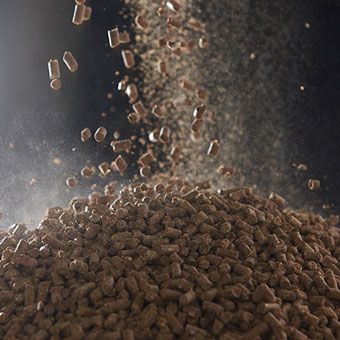
Confusion about cold-pressed dog food
Pelletizing is an ageing production method, which is also used to produce cold-pressed dog food
Like the extrusion production method, pelletizing originated in the 1930s and is a clever form of waste utilization, in my opinion. Pelletizing belongs to the process technology of agglomeration, which roughly means the enlargement of a particle. For example, sawdust is enlarged when it is pressed into pellets. Feedstuffs for cattle and pigs are also often pressed to reduce the dustiness of the feed.
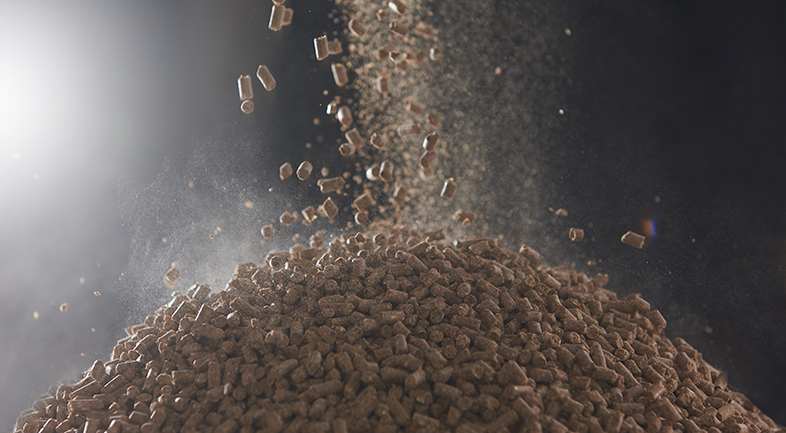
Filling of pellets
For cold-pressed dog food, only meal is used
Meal is predominantly used for pelleted (cold pressed) dog food. These can be meat meal, grain meal, rice meal, rumen meal, bone meal, fish meal, etc. In the pelleting process, the various kinds of meal are mixed and pressed through a steel die with holes in the desired pellet diameter. Due to the high pressing pressure, heating takes place that is well below the cooking temperature. Clever advertising experts have therefore given pelleted dog food the name "cold-pressed dog food". However, those who now think that the ingredients for cold-pressed dog food are only gently heated by the pressing process are ignoring the fact that the ingredients contain meal that has itself previously been produced by heat and high pressure.
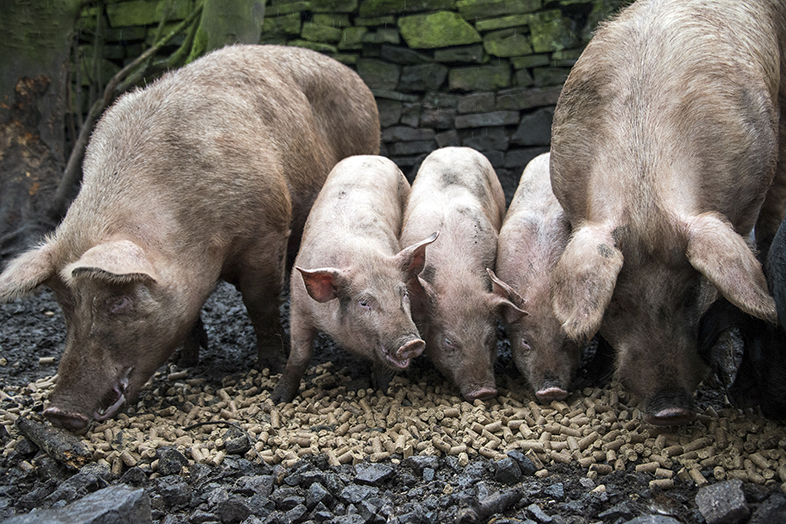
Pelleted food
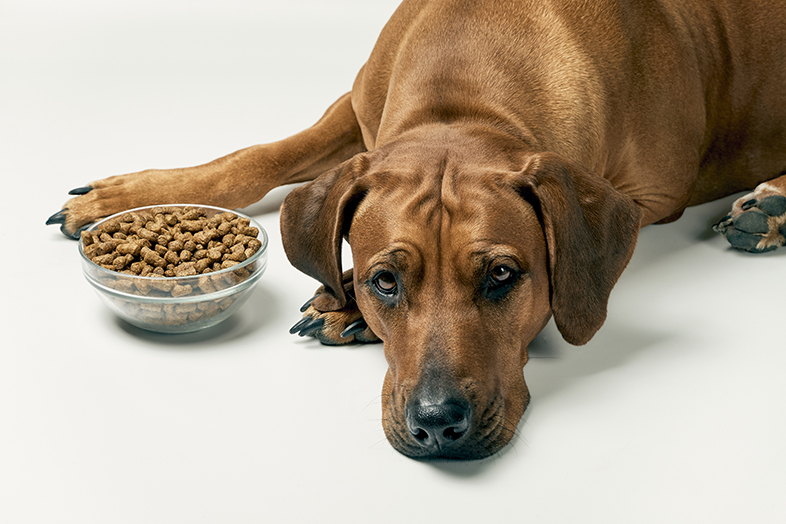
Resourceful advertisers have given pelleted food the name "cold-pressed dog food."
Meat meal is inferior to fresh meat
Meat meal is made by extracting the nutrient-rich meat juices and natural fat from fresh meat. Meat meals are therefore lower in nutrients and therefore lower in quality than fresh meat.
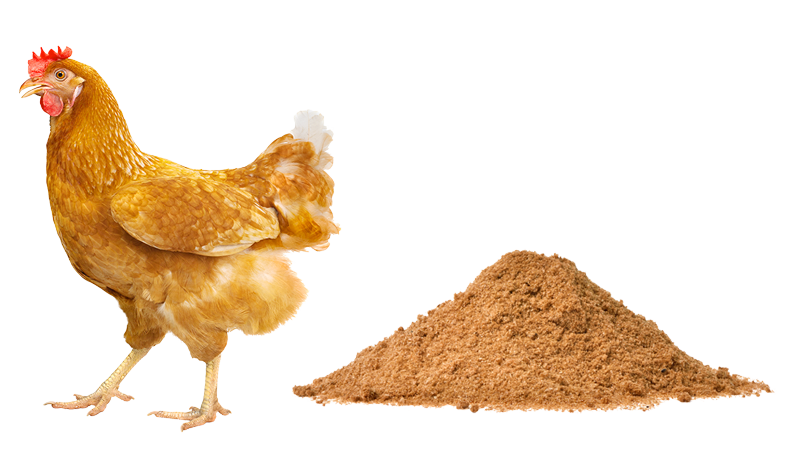
Meat meal is the last remnant from the burnt parts of the animal that were not intended for human consumption.
This is how meat meal is made!
Fresh meat is sterilized in a pressure vessel at a temperature of at least 133°C and a pressure of 3 bar for at least 20 minutes. The meat is then placed in a vacuum dryer where the meat juices are extracted at a temperature of 100 to 125°C. The meat is then dried in a press at a pressure of 3 bar for at least 20 minutes. After the vacuum dryer, the dried raw mass is put into a press where the natural fat is extracted at about 200 bar.
It is no different with grain meal: Grain is also modified (broken down) by heat in order to be digestible for carnivores in the first place.
If you are now looking for a dog food that is prepared from fresh meat and not from meal, you certainly should not use cold-pressed dog food, even if the advertising often promises otherwise. I recommend Fleischsaftgarung, in which fresh meat is cooked in its own meat juice at a low temperature until dry food is finally produced. Fleischsaftgarung is a method of preparing human food, adapted to the needs of the dog.
| Fresh meat from chicken | Meat meal from chicken |
|---|---|
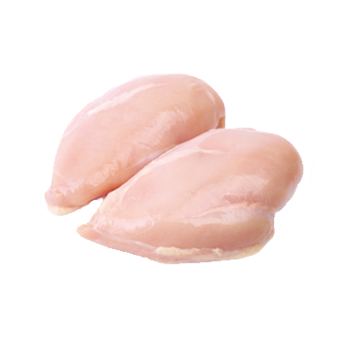 |
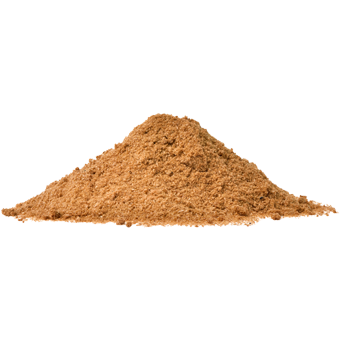 |
| High moisture | Low moisture |
| Clean combination of meat and skin | Variable in raw materials and their quality |
| Low ash content | Higher ash content |
|
Source of human food |
Suitable for use as animal feed |
| Protein digestibility approx. 95% | Protein digestibility approx. 61 |
| Approx. 65 (g/kg protein) lysine, one of the vital amino acids | Approx. 41 (g/kg protein) lysine |
| A higher content of A, D, and E vitamins |
A lower content of A, D, and E vitamins |
| Contains more creatine, which helps to improve cellular energy supply | Contains less creatine |
Cold-pressed dog food breaks down into meal when added to water
If you add cold-pressed dog food to a glass of water, the pressing dissolves and it breaks down again into its original components – and these are mainly composed of meal. The meal content is often so fine that a haze is created in the water. This is an effect that can be seen very well in the Dog Bible comparison test of cold-pressed dog foods with before and after photos.
Even cold-pressed dog foods swell up!
I've often read that cold-pressed dog foods don't swell. Well, it depends on the brand. There are cold-pressed dog foods that actually swell up a lot, as evidenced by swelling tests. If dog food swells in the stomach, it stretches and a so-called food belly is formed. According to various studies, swelling dry food can cause gastric torsion in dogs, which is often fatal. This affects larger dogs in particular. To date, there is only one reliable preparation method that does not cause dry food to swell, and that is Fleischsaftgarung.
Summary
Pelleting is the name of the process used to press dog food. Only meal is pressed, which at best includes meat meal. The pressure from this process results in heat generation far below cooking temperature. This gave resourceful advertising specialists the idea to call pelletized dog food "cold-pressed dog food". However, anyone who now thinks that cold-pressed dog food is produced at a low temperature and is therefore gentle is wrong. Cold-pressed dog food consists only of meal, and to produce meat meal or grain meal, high temperatures are necessary. In short, with cold-pressed dog food, you are feeding different kinds of meal created by high temperatures. It is not possible to pelletize fresh meat. If you are looking for dog food made from fresh meat, then I recommend dog food prepared with Fleischsaftgarung.

